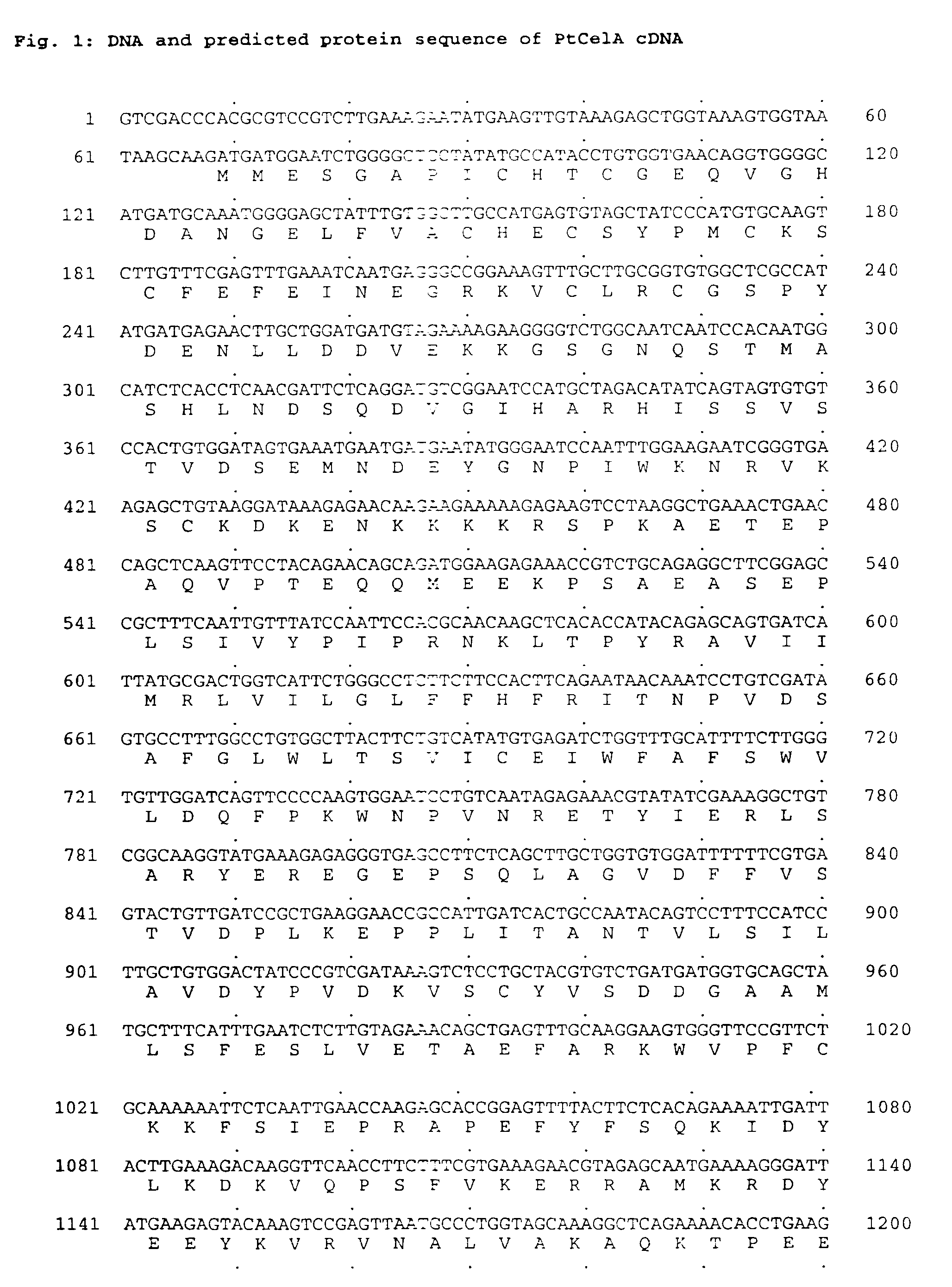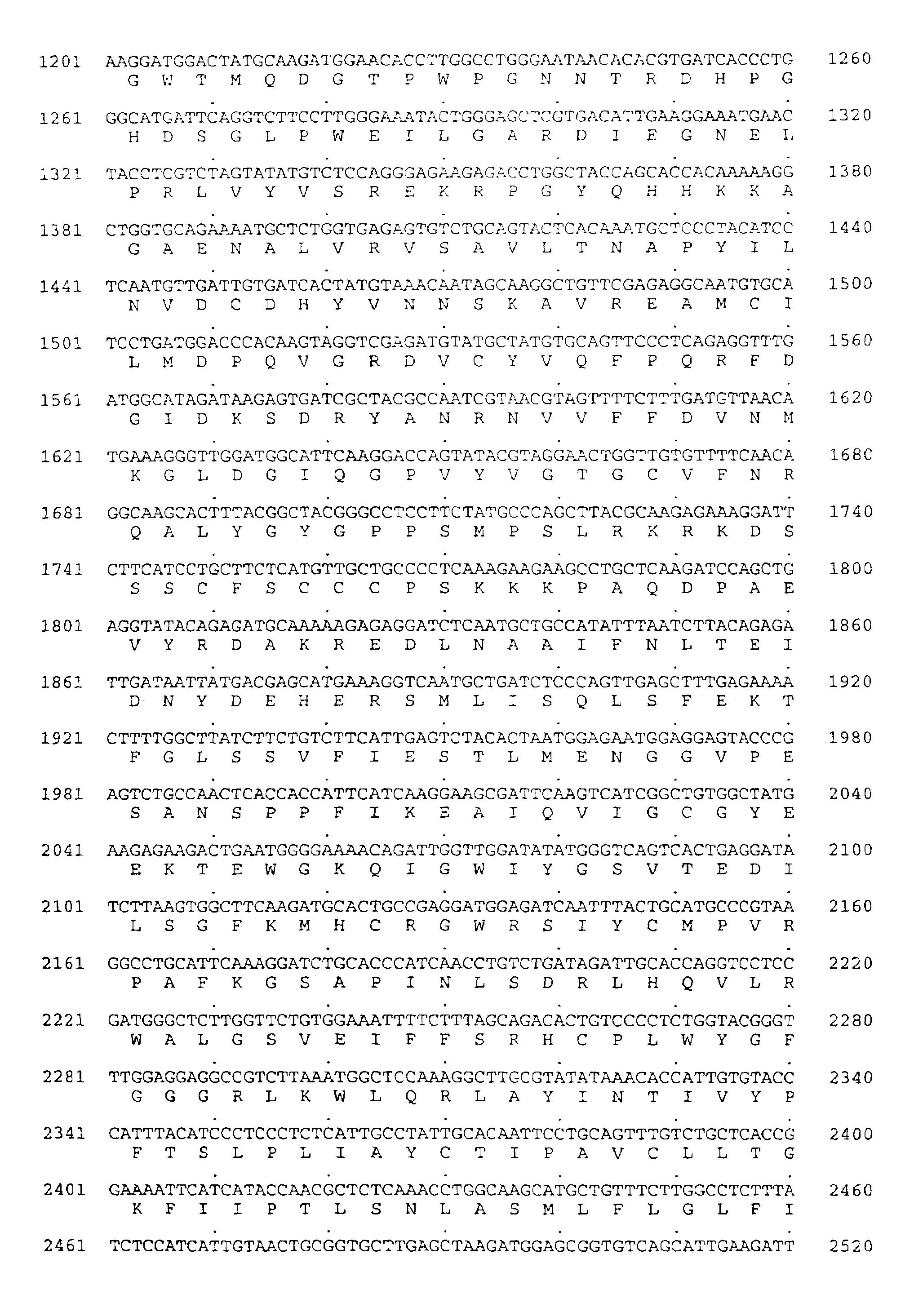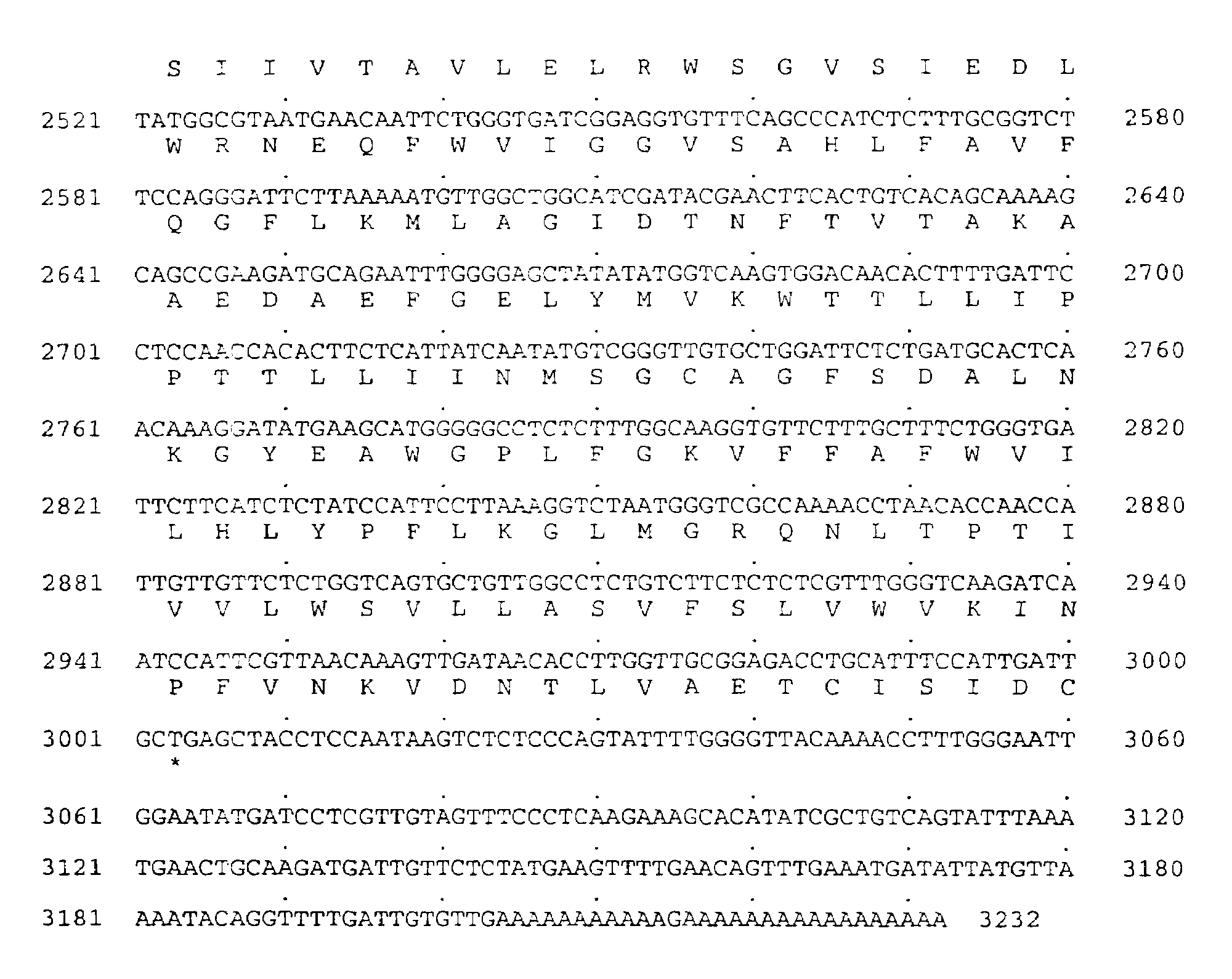Cellulose synthase encoding polynucleotides and uses thereof
a technology of cellulose synthase and polynucleotide, which is applied in the field of polynucleotide molecules encoding cellulose synthase, and promoters of cellulose synthase and cellulose synthase polypeptides, can solve the problems of high cellulose content, affecting the growth or cellulose content of plants, and affecting the quality of wood. , to achieve the effect of improving the quality of wood, reducing the content of lig
- Summary
- Abstract
- Description
- Claims
- Application Information
AI Technical Summary
Benefits of technology
Problems solved by technology
Method used
Image
Examples
example
Molecular Cloning of Cellulose Synthase
[0114]This Example describes the first tree cellulose synthase cDNA (PtCelA, GenBank No. AF072131) cloned from developing secondary xylem of aspen trees using RSW1 cDNA.
[0115]Prior to the present invention, only partial clones of cellulose synthases from crop species and cotton GhCelA have been discovered, which have significant homology to each other. The present inventors have discovered and cloned a new full-length cellulose synthase cDNA, AraxCelA (GenBank No. AF062485) (FIG. 7, [SEQ ID NO: 4]), from an Arabidopsis primary library. AraxCelA is a new member of cellulose synthase and shows 63–85% identity and 72–90% similarity in amino acid sequence with other Arabidopsis CelA members.
[0116]Another cellulose synthase was cloned in aspen using a 32P-labeled 1651-bp long EcoRI fragment of Arabidopsis CelA cDNA, which encodes a centrally located UDP-glucose binding domain, was used as a probe to screen about 500,000 pfu of a developing xylem cDN...
PUM
 Login to View More
Login to View More Abstract
Description
Claims
Application Information
 Login to View More
Login to View More - R&D
- Intellectual Property
- Life Sciences
- Materials
- Tech Scout
- Unparalleled Data Quality
- Higher Quality Content
- 60% Fewer Hallucinations
Browse by: Latest US Patents, China's latest patents, Technical Efficacy Thesaurus, Application Domain, Technology Topic, Popular Technical Reports.
© 2025 PatSnap. All rights reserved.Legal|Privacy policy|Modern Slavery Act Transparency Statement|Sitemap|About US| Contact US: help@patsnap.com



